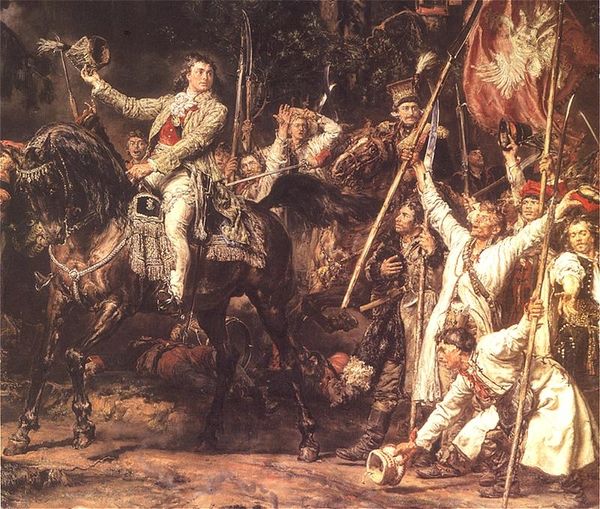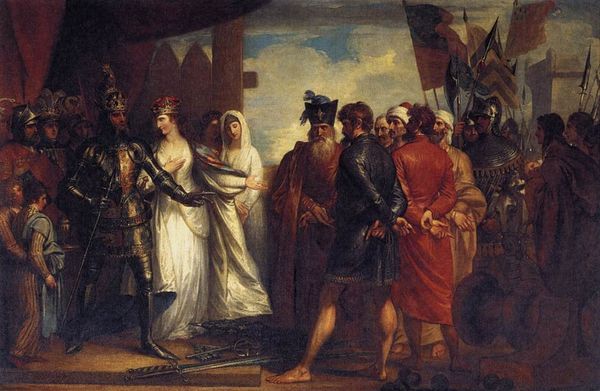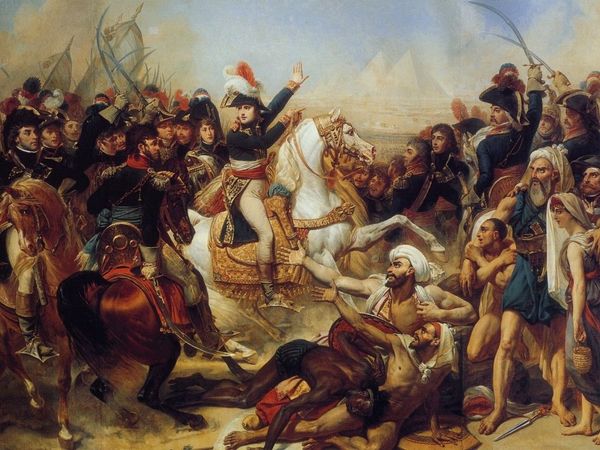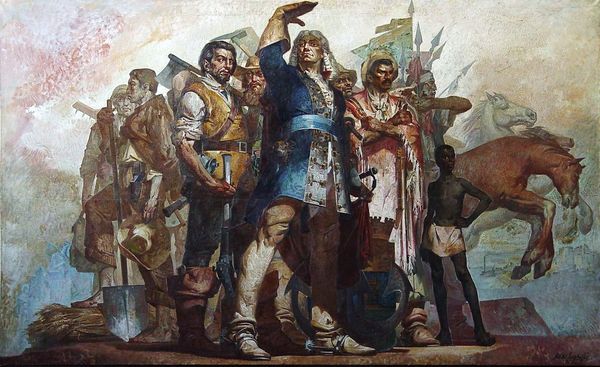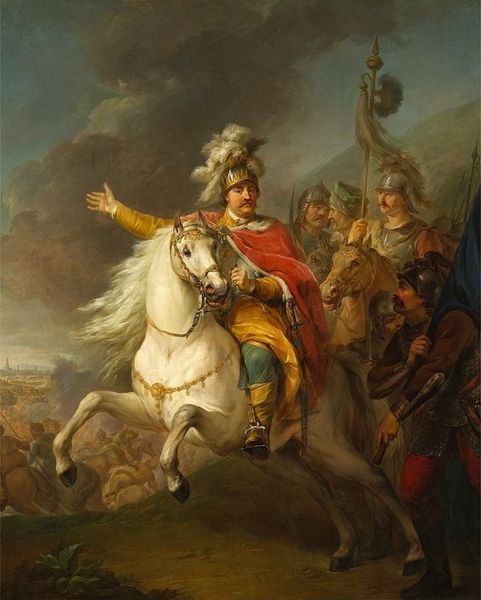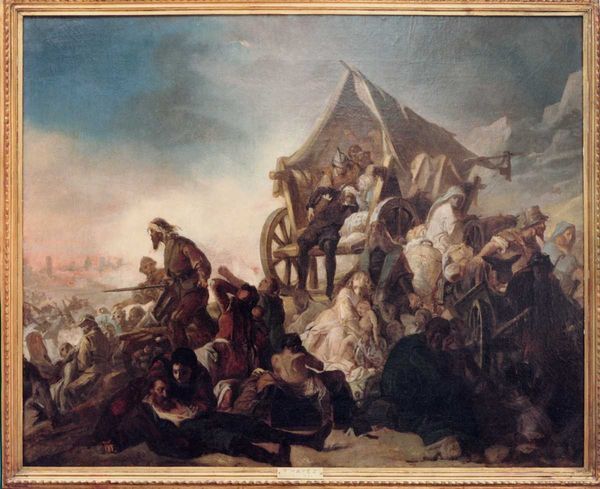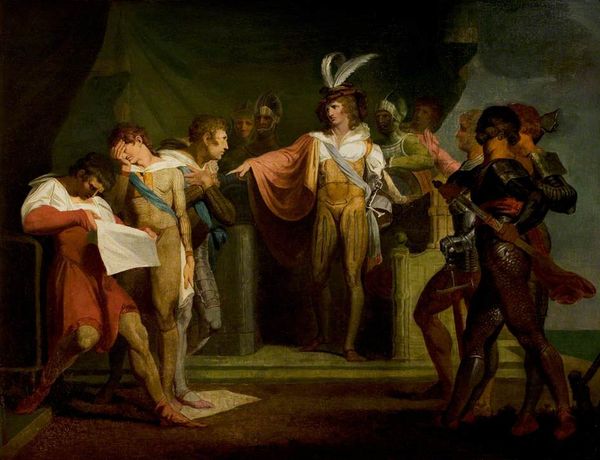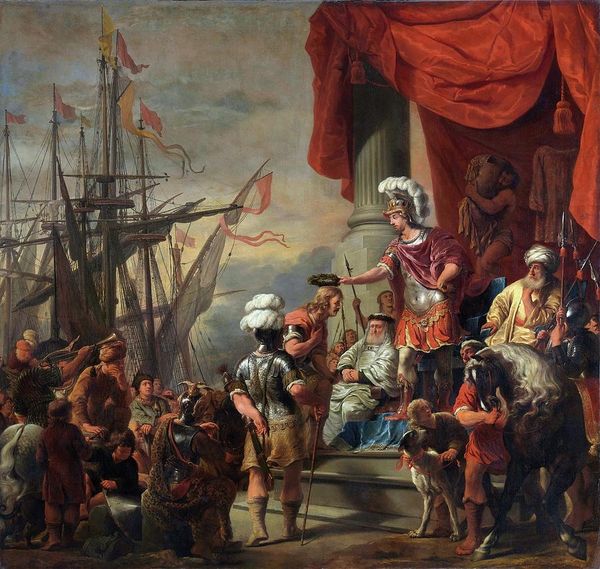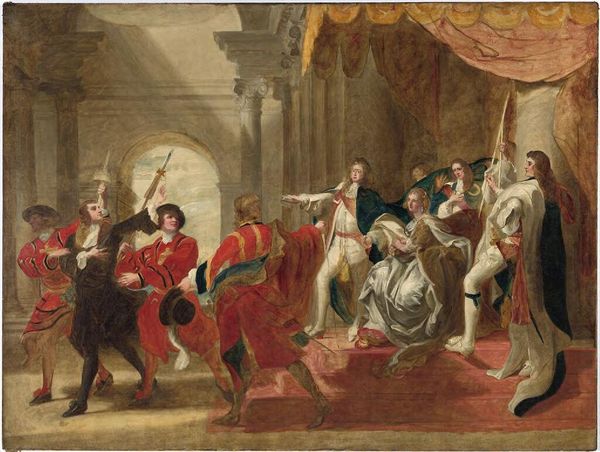
painting, oil-paint
#
narrative-art
#
painting
#
oil-paint
#
figuration
#
oil painting
#
romanticism
#
mythology
#
painting painterly
#
history-painting
Copyright: Public domain
Curator: William Hamilton created this oil painting titled "The Landing of Richard II at Milford Haven" around 1800. Editor: It's striking how melancholic the scene is, considering it depicts a king's arrival. The color palette, though vivid, has an overall muted, almost sorrowful feel. Curator: That somber atmosphere definitely aligns with the political context of the time. Richard II's reign was marked by turmoil and ultimately ended in his deposition. Hamilton’s choice to portray this particular moment—the return to a kingdom rife with dissent— speaks volumes. We must understand his choice of episode in light of broader socio-political trends. Editor: Visually, I'm drawn to the flag in the background. The symbol is faded and indistinct, lacking any definitive symbolism. It could be suggesting a weakening of power, perhaps mirroring Richard's state. Curator: Exactly! Hamilton employs Romanticism to highlight the fallibility of leadership. Richard's arrival isn't triumphant; it's fraught with uncertainty. Consider the use of light, or rather, the lack of it. It doesn't illuminate and empower the king; rather it softens his presence as though he might disappear. The narrative implications speak volumes about leadership and gender when Richard’s weakness threatens masculine power. Editor: I see that, and there is also an element of isolation here, even amidst a crowd. Each character around Richard seems absorbed in their own world, not connected to him directly. The bishop beside Richard feels protective, maybe aware that the game is already lost. Curator: We might interpret this scene as a critique of the aristocratic system that places individuals in positions of power without considering broader impacts on identity. Richard appears so removed from reality, consumed by emotion instead of ruling through reasoned judgement, his tears indicating unmanly behavior in this context. Editor: This interpretation is powerful! It does feel as if Hamilton used well-established iconography of kingship and tweaked it. The symbols of royalty – crown, banner, expectant subjects – are all there, yet deflated and hinting at what's to come. Curator: I'm compelled to consider Richard II’s perceived inadequacies in light of shifting attitudes toward race. Historical texts depict Richard II’s features that, to modern eyes, suggest a non-normative or ambiguous racial background. Can Richard’s appearance symbolize England’s internal fears related to social structures? Editor: It's a strong re-imagining of historical and cultural ideas with the use of iconography. Considering our contemporary sociopolitical landscape, looking at this painting through multiple perspectives of analysis brings such incredible depth and allows us to ask imperative questions about society! Curator: I concur, I will never look at history the same way again.
Comments
No comments
Be the first to comment and join the conversation on the ultimate creative platform.

